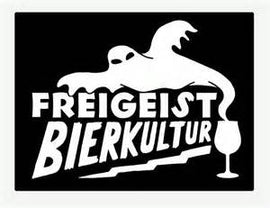|
Bergere Origine Brut NV |
|
|
From: Vallée du Petit Morin, Champagne, France |
About the Winery: The Bergère family has tended vines on the slopes of the Vallée du Petit Morin since 1848 and in 1949, Albert Bergère founded Maison Bergère in an effort to better promote the family’s terroir. In 1986, Albert’s son, André took over the estate and further expanded their vineyard holdings. His wife, Brigitte established their boutique on Avenue de Champagne in Épernay, which is now managed by their daughter, Annaëlle. Adrien Bergère joined his parents and sister on the estate in 2014 as winemaker after obtaining his diploma in oenology. He arrived with the desire to further enhance his family’s terroirs and showcase the richness of the Vallée du Petit Morin. To achieve this, he immediately began to vinify all the parcels separately to better understand the diversity of his terroir and isolate the best parcels. Between 2014-2018 he experimented with barrels and foudres, which allowed him to analyze his wines on different vinifications, and adapt his work to best express his terroirs. Bergere is currently farming lutte raisonée but working towards a full organic conversion. Assemblage/Vinification: This cuvée represents the “origin” of the family story and blends grapes from their three historic villages: Fèrebrianges, Etoges, Congy, Vallée du Petit Morin. The soil is sand and clay over limestone, the wine is aged on its lees, partially in foudre and 228L Barrels. 70% Chardonnay, 20% Pinot Noir, 10% Pinot Meunier. Dosage: 5g/L Tasting Notes: Complex and yeasty with great flavors of creaminess, fresh baked bread and sourdough, all underpinned by smoky hints of mushrooms and an outstanding long finish. |
|
Winemaker: A. Bergere |
|
|
Price per bottle / Price per case: $60.99/$658.70 |
|
|
Suggested Food Pairing: as an aperitif or with shellfish, fish, rich vegetable dishes, or white meat. |
|
|
Laborde Champagne Brut Tandem NV |
|
|
From: Nogent L’Abbesse, Monts de Berru, Champagne |
About the Winemaker: Since at least the Revolution, Delphine Laborde’s family has farmed grapes in Nogent l’Abbesse. Just prior to phylloxera, the village inhabitants cultivated some 100 hectares of vines, and what little survived at the beginning of the 20th century is thanks to the tenacity of Nogent’s growers (in the two other villages anchoring the mountain, Berru and Cernay-lès-Reims, vines disappeared entirely during the pandemic). Their determination became all the more remarkable when the First World War erupted and the German army occupied the strategic hilltop. Women maintained the vines when possible; the men were sent off to work in sawmills occupied by Germans. Reims sat 15 kilometers away, the front line ran in between, and by the war’s end in 1918 Nogent l’Abbesse lay in ruins from shelling. Delphine’s maternal great-grandfather rebuilt the house where she lives today. About the Wine-making: Delphine and her husband farm 5 hectares, almost all of which are sélection massale vines averaging 30 years of age. Two parcels are in Berru, 14 in Nogent l’Abbesse; 95% are in Chardonnay with the remaining 5% being one parcel of Pinot Noir planted in the early 1970s. In the vines there is no use of chemical fertilizers, herbicides or insecticides. Plowing is adapted to each parcel and when employed is shallow to preserve microbial life in the soil. The tandem bottling is 75% Chardonnay from Nogent l’Abbesse and 25% old-vine Pinot Noir from Berru. Vinified parcel by parcel and blended with as much as 45% of reserve wine. Eight months of élevage in tank followed by two years of aging in bottle on lees before disgorgement. 250 6-packs produced. Dosage: 7g/L Tasting Notes: A seamlessly delicate rendition that delivers sun-kissed flavors in an almost weightless package. A clear, concise and elegant wine. |
|
Winemaker: Delphine Laborde |
|
|
Price per bottle / Price per case: $64.99/$701.9 |
|
|
Suggested Food Pairing: Potato chips, Crab cakes, burger and fries |
|





